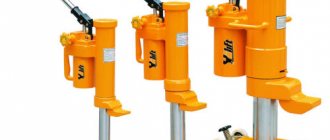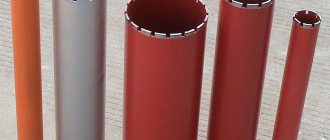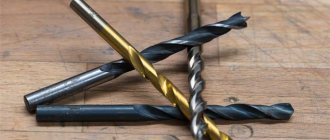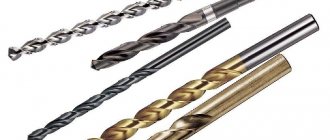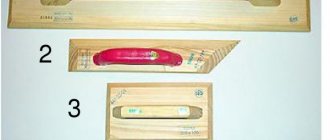Functions of compressor oil
The lubricant material solves a number of problems aimed at ensuring stable operation of the compressor:
- lubricates rubbing parts, thereby extending their service life;
- cools the piston group, which heats up during operation;
- seals gaps;
- reduces detonation;
- ensures the tightness of the working chamber.
Insufficient oil level or absence of oil leads to a decrease in the tightness of the compression chamber and a deterioration in compressor performance.
Which oil is best to pour into a piston air compressor - basic properties
The design features of the piston unit dictate special requirements for lubricants that can ensure its uninterrupted operation. Ideal for lubrication is a closed oil pipeline system and a sealed housing. In a reciprocating compressor, the top parts of the piston and cylinder are in contact with the environment, and the oil supplied to the piston group contaminates the compressed air. There is no mechanical separation of the lubrication zone from the compressed air generation zone. This design feature requires finding a solution to two dissimilar problems:
- on the one hand, it is necessary to reduce the amount of lubricant to an acceptable minimum in order to ensure the purity of the compressed air;
- on the other hand, it is necessary to provide high-quality lubrication of the rubbing elements.
To solve these problems, the oil that needs to be poured into the air compressor must have special properties:
- good adhesion, due to which the lubricant is kept in a limited area and does not enter the air stream;
- stability of properties with increasing temperature - this is important, since the unit is prone to heating;
- high flash point, ensuring fire safety of the unit;
- ability to displace water particles;
- a strictly standardized viscosity value - a composition that is too liquid will flow out of the lubrication zone, and a composition that is too thick will be ineffective;
- minimal tendency to carbon deposits.
There is another important requirement that applies to all lubricants - the absence of substances harmful to the environment and human health.
Owners of air piston compressors often ask the question: is it possible to use automotive oils for internal combustion engines?
Answer: it is not recommended to use them in the piston group, since they do not have the necessary qualities. Compressor oil meets improved environmental characteristics compared to automobile oil, provides higher fire safety, and has other optimal viscosity parameters.
Air compressor. Filling with Oil. First Start.
Foreign standards, but not alien
The existing range of compressor oils is wide. Its increase is due to the growing demand for compressed air, the development of compressor designs, and tightening requirements for their performance, reliability and energy efficiency.
Compressor oils of various viscosity classes are offered by the main players in the Russian oil industry (compressor oil LUKOIL, ROSNEFT).
As foreign trade liberalized, foreign-made products appeared on the domestic market, manufactured taking into account the latest advances in oil refining technologies (SHELL compressor oil, MOBIL compressor oil).
It is not surprising that today in Russia brands of compressor oil have become widespread, the production of which is regulated by European standards (DIN 51506-2017, ISO 6743-3A).
In DIN 51506-2017, compressor oils are classified into groups depending on the final temperature of the compressed air:
- VB, VB-L – up to 140°C;
- VC, VC-L – up to 160°C;
- VD, VD-L – up to 220°C.
They differ in their aging resistance (VDL compressor oil is especially resistant). “V” means compressor oil, “L” indicates the presence of additives.
Manufacturers, in order for their products to be easily recognizable on the market, give them their own names (SHELL CORENA compressor oil, MOBIL RARUS compressor oil, LUKOIL STABIO compressor oil). If the name contains (or implies, ─ as indicated by the reference to DIN 51506-2017) a combination of the letters VD, VDL (VD-L), VB, VBL (VB-L), VC, VCL (VC-L), present in Brand numbers in most cases indicate the kinematic viscosity of the oil at 40 OC. It is equal to the ISO viscosity grade with relatively small deviations (± 10%).
Examples: compressor oil 32, compressor oil 46, compressor oil 100 (for example, compressor oil VDL 100 or compressor oil VG 100), compressor oil 150.
The brand of compressor oil may contain a direct reference to its ISO viscosity ─ compressor oil ISO 100. Or a more specific example ─ Mannol Compressor Oil ISO 100.
Mannol Compressor Oil
Compressor oils Mannol Compressor Oil ─ one of the products of the company Sudheimer Car Technik-Vertriebs GmbH ─ is represented in Russia by the company BITECH (https://bi-teh.ru/). The German manufacturer produces a wide range of products, including lubricants and oils ─ industrial, motor, and transmission. Including compressor oil brands:
- Mannol Compressor Oil ISO 46;
- Mannol Compressor Oil ISO 100;
- Mannol Compressor Oil ISO 150.
Mineral compressor oil Mannol Compressor Oil based on paraffin oils is used to lubricate piston, screw, and centrifugal air compressors, and Mannol Compressor Oil ISO 46 is also used for pneumatic tools. Its effectiveness is enhanced by the presence of ashless additives.
Mannol Compressor Oil has vital properties for compressors:
- thermal stability;
- oxidation resistance;
- anti-corrosion properties;
- low volatility;
- leaves a minimum of deposits.
All of them help to guarantee stable, reliable operation of the equipment.
Buying compressor oil Mannol Compressor Oil means making the right choice for the correct operation of compressors.
Compressor oil manufactured in northern Germany is distinguished by high quality and compliance with the requirements set by consumers for this type of product.
A few lines below about the requirements, but now we list the main functions of compressor oil.
Compressor oil functions:
lubrication;
lubrication of rubbing surfaces reduces abrasive wear of parts, reduces energy losses caused by friction, ensures the cleanliness of rubbing surfaces, helps prevent scuffing, jamming and other defects fraught with serious breakdowns and rapid wear;
cooling;
removal of excess heat is a necessary condition for the functioning of the compressor;
- corrosion protection;
- sealing gaps;
Having several orders of magnitude less fluidity than air, oil fills gaps, promoting better sealing of cavities.
The piston compressor lubrication system includes a pump, oil filter, thermostat, and oil cooler. Compressor oil for reciprocating compressors lubricates pistons, valves, bearings and crank mechanism. It forms a stable liquid layer between the rubbing surfaces (cylinder liner and piston ring).
Compressor oil for screw compressors lubricates shaft bearings, screws and gears (or just gears), helps reduce the temperature in the compression chamber, and seals the gaps between rotors.
Main characteristics taken into account when choosing compressor oils
The main properties of lubricants for compressors running on an electric motor or internal combustion engine:
- Viscosity. Characterized by values 1-15. The optimal value is 10-12. This composition is well retained in the lubrication zone. A product with a lower viscosity is consumed very quickly. Viscosity also characterizes the tendency of a lubricant to lose performance at high temperatures. The higher the viscosity value, the more resistant the product is to heat.
- Availability of additives. High-quality lubricants from well-known manufacturers always contain additives that increase valuable performance properties - anti-oxidation, anti-foaming, anti-corrosion, temperature stability. In domestic labeling, the presence of additives is indicated by the letter “P”, in foreign labeling – I.
- Self-ignition temperature. For air compressors, lubricants with this parameter not lower than +350 °C are recommended.
- Pour point. This is an important quality taken into account when it is necessary to operate compressor equipment in winter conditions.
Helpful information
Content
One of the conditions for the uninterrupted operation of a screw compressor is timely oil change. This equipment is characterized by an optimal balance of ease of use and durability. The working part of the unit consists of a compression chamber, a pair of specially shaped screws and a motor.
Lubrication value for screw compressor
The service life of a screw compressor depends on the quality and regularity of oil changes more than in other types of devices. Increased requirements for the properties of the lubricating fluid are due to the specific operation of the equipment. Air injection is carried out by a pair of screws, during the rotation of which the cavity between them moves from the suction point to the compression chamber. The screws do not touch, leaving a microscopic gap between them. During operation, this gap is filled with an oil film, so air leakage is excluded. During compressor operation, the oil composition gradually changes. Wear products from parts, dust and moisture from the incoming air enter the process fluid. A change in composition leads to a deterioration in technical parameters. For screw compressors, timely oil change is one of the most important operating requirements.
How often does a screw compressor require an oil change?
The standard service life of the lubricating fluid is from 2500 to 3000 working hours, but at least once a year. It is not recommended to exceed this time. For some models, the developer may set other deadlines, which must be reported in the instruction manual.
External factors also influence the period of permissible work:
level of pollution and humidity of captured air.
ambient temperature.
The reason for the reduction in oil life may be a malfunction of the air filter or another structural element of the screw compressor.
When operating a new screw compressor, the first oil change should be carried out at shorter intervals. As a rule, the oil product needs to be completely replaced after 500 hours of operation. This is due to the fact that during the running-in stage of the unit, moving parts are ground in and wear products are released.
Also, residual molding sand gets into the oil, which can remain on the surfaces of new parts made by casting. All these factors lead to the fact that the composition of the lubricating fluid in a new compressor unit changes faster than in a run-in and well-tuned unit.
Procedure for changing oil in a screw compressor
Make sure that the pressure in the system and receiver is “0” and disconnect from the power supply.
Remove the compressor housing wall.
Visually check the absence of oil leaks, the condition of the radiator, the strength of fastening of the components, the tension of the belts, and the clogging of the air filter. If problems are identified, fix them.
Completely drain the entire volume of lubricating fluid. The old grease is drained through the oil drain valve. The operator should ensure that the system is empty.
Replace the oil filter and filter separator (oil separator). As a rule, during this maintenance the air filter is also changed.
After this, new oil is poured in the quantity recommended by the manufacturer.
Check the oil level through the oil indicator sight glass
After checking that the oil filler holes are closed, turn on the compressor for a few minutes. Then you need to recheck the oil level and add if necessary.
Important! You can fill only those brands of oil recommended by the manufacturer. You cannot mix different brands. If the compressor has not been used for a long time: before starting after changing the oil, it is necessary to add a portion of oil to the screw pair (through the air filter pipe or otherwise).
Tags: procedure for changing oil in a screw compressor, changing oil in a screw compressor, changing oil in a screw compressor step by step
www.compressor-mash.ru
How to choose the right oil to fill an air piston compressor
The best option is to purchase the oil specified in the technical data sheet for the compressor and fill it in a volume that is slightly higher than that recommended by the manufacturer.
If the technical certificate for the equipment is missing for some reason, you can resort to the following methods:
- find the official website of the manufacturer or company producing compressors with similar technical characteristics;
- get advice from a store that is an official dealer of the brand, or from a service center that services such units;
- When purchasing used equipment, ask the seller about the features of servicing compressor equipment.
A particularly important characteristic that must be taken into account when choosing a lubricant is temperature limitation.
Examples of oil labeling
- K-19, KS-19 are low-sulfur oils that can be used in medium and high pressure compressors.
- K3-10 – compositions that maintain performance characteristics up to +200 °C.
- K2-24, K3-20, K4-20, K2-220 - such oils can be poured both into compressor engines and into the piston area.
- VB, VB-I, DAG – are designed for use in any type of compressor equipment in which the temperature does not exceed +140 °C. The presence of the letter I in the designation indicates the presence of special additives that increase the performance properties of the lubricant composition.
- VC, VC-I, DAA. They are in demand in permanently installed units with a temperature limit of +160 °C, and in mobile units operated in open space, +220 °C.
- VD, VD-I, DAB. Such oils are poured into powerful air piston compressors with a temperature limit of +220 °C, regardless of the location of operation of the equipment.
Myth No. 4: How much compressed air a compressor consumes is equal to its performance.
This statement is completely false. Performance does not depend on the volume of air consumed, but on temperature conditions and ambient pressure, that is, on suction conditions.
The characteristic of a piston compressor is its suction performance (theoretical), which actually corresponds to the volume of air that the device can consume in a certain unit of time. However, in reality this value will be significantly less - real performance is approximately 1/5 lower than theoretical.
What kind of oil goes into an air piston compressor - recommended brands
For uninterrupted operation of air compressor equipment, it is recommended to use only special certified compounds. Possible options:
- Ariane K-12. Inexpensive mineral oil, which is poured into compressors providing medium and high pressure levels. Features a reduced amount of sulfur. Another low-sulfur product is Ariane K-28. Its advantage is the complete absence of mechanical inclusions.
- BP Enersyn GCS-180. A synthetic composition that cannot be combined with a mineral one. Designed specifically for piston compressor units. Contains antioxidants.
- Fubag. Oils of this German brand can be used in air compressors of other brands, including Chinese ones. They contain a complex of additives that prevent oxidation processes at any temperature and the formation of coke deposits.
- KM100 Enkor 40612. Economical due to the minimum level of evaporation. This oil can be poured into the compressor in winter, since it is adapted to work at low temperatures.
- Mobile Rarus. Product suitable for all types of air compressors. It is characterized by: reduced viscosity, high combustion temperature, low ability to form carbon deposits.
- Mineral oil "Zubr ZMK-PS" is an acceptable option for household compressors. This wear-resistant product does not require frequent replacement.
Compressor maintenance requirements
Before carrying out work, you must make sure that the compressor is disconnected from the power supply and that the pressure gauge shows zero pressure.
The optimal maintenance schedule is every 500 hours of equipment operation. In addition to standard EO work, maintenance includes:
- checking the oil level and the formation of dust or oil deposits - if this is detected, it is necessary to clean the equipment;
- cleaning or blowing out the radiator with compressed air;
- checking the cleanliness of the oil (there should be no intense darkening);
- checking the functionality of electrical equipment, wiring and terminal connections.
Please note that the first change of oil and, accordingly, the oil filter should be carried out after the first 500 hours of operation of the equipment, that is, after its “break-in”. If the installation has not been put into operation (“equipment downtime”), then the oil must be changed one year from the date of manufacture of the compressor.
The oil change is carried out according to the following scheme:
- you need to remove the right wall of the compressor;
- turn on the equipment so that the oil warms up to a temperature of 70 degrees;
- turn off the compressor;
- remove the plug and gradually open the oil drain valve (to receive the waste liquid, prepare a container in advance);
- remove the old oil filter and replace it with a new one;
- turn the screw block pulley approximately 3-5 turns (the direction is indicated by the arrow on the end surface);
- close the tap and then pour oil through the oil filler neck, monitoring the fill level using the oil indicator;
- close the filler hole with a plug;
- turn on the compressor and leave it running for 1-2 minutes until the oil temperature approaches 70 degrees, then turn off the installation and add oil if necessary;
- mount the right wall of the installation.
It is better to invite an experienced specialist to change the oil in the compressor.
To ensure correct operation of the installation, you should use oil for screw compressors with the following technical indicators:
- viscosity - 46 cSt at a temperature of 40 ° C;
- minimum pour point temperature - from -8 to -10 ° C;
- flammability point temperature is more than 200 °C.
It is not recommended to mix oil from different manufacturers and brands.
After every 2000 operating hours, it is necessary to replace the air filters, check the belt tension and, if necessary, adjust it, and also check the tightness of the pipeline.
After every 4000 hours of operation of the unit, it is necessary to change the oil separator filter, change the oil and oil filter, check the safety valves, clean the radiator, check the condition of the belts and, if necessary, replace them with new ones, and also check the condition of the receiver.
If the compressor is installed in a dusty room, it is recommended that maintenance operations be carried out more frequently, paying the greatest attention to cleaning the radiator.
Additional recommendations when changing oil:
The oil drain valve is located at the bottom of the oil sump and is used to drain used oil. If necessary, condensate is also removed through this tap. The valve of the oil removal valve should be opened and closed only if the installation is turned off and there is no pressure inside the housing.
The oil level is monitored visually; the maximum oil level should not be higher than the upper cut of the inspection window, the minimum should be the lower cut (under the condition of a “cold” installation).
Maintenance operations:
- Replacing the air filter (after every 2000 hours of operation) - if the replacement frequency is not observed, the service life of the screw unit is reduced.
- Oil change (after every 4000 hours of operation, but at least once a year) - the first oil change is carried out after a “trial” period of operation after (500 hours). Oil is poured into the unit through the oil filler hole located on the oil sump body and closed with a special cap. The lid can only be opened if there is no pressure in the housing.
- The oil separator filter is replaced after every 4000 operations of the unit, but at least once a year.
- Oil filter replacement - carried out after every 4000 hours of operation, but at least once a year, the first replacement should be carried out after 500 hours of operation.
- Belt replacement is carried out after every 4000 hours of operation. After the first 50 hours, and then every 2000 hours, it is necessary to check the belt tension level and tighten them using a special adjuster.
To replace the belts you need:
- remove the protective fence;
- relieve the tension from the two bolts and two nuts with which the plate is attached to the screw block;
- using the tensioner screws, carefully move the plate along with the screw block down;
- remove the straps;
- using the tensioner screws, move the plate with the screw block up so as to create the desired tension level;
- fix the plate with bolts and nuts;
- put the safety guard in place.
Additional recommendations for belt tension:
- Belt tension should be carried out in accordance with the recommendations described above.
- For normal operation of the unit, it is necessary to regularly check the cleanliness of the contact area between the belt and pulleys, adjusting the degree of belt tension if necessary.
- The degree of belt tension must be periodically monitored; a mandatory tension check must be performed after a break in the operation of the equipment for a week or more. Belt deflection is determined using a dynamometer, ruler and cord.
PREVIOUS POST TO TOP NEXT POST
www.pst.ru
Which oil is better to pour into the compressor - mineral or synthetic?
Mineral products are cheaper. They are usually used in compressor equipment used periodically, since they have a short operating period. Mineral lubricants are characterized by a strict temperature limit, usually +90 °C. At higher operating temperatures, the oil may ignite or cause detonation.
Synthetic compressor oils have a higher price, justified by a set of valuable characteristics:
- possibility of use at elevated operating temperatures: +180…+200 °C;
- maintaining performance characteristics at subzero temperatures, which allows the use of synthetic lubricants in winter;
- long service life, which is 3-4 times higher than that of mineral products.
Synthetic compressor oils are usually purchased for powerful, frequently used units.
